Return to home page
![]() Somebody sent me the operating manual (7MB), which contains useful calibration tables.
Somebody sent me the operating manual (7MB), which contains useful calibration tables.
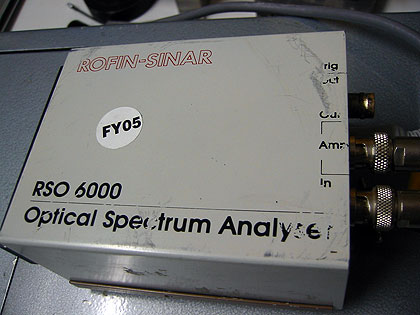
I got this neat little device as an occasion and wondered whether it would be useful for laser spectral analysis. It turned out not to be well suitable due to lack of sufficient resolution (without modifications at least). Nevertheless here are a few remarks, which should be viewed as complementing what is written about it in Sam's laser FAQ. The following picture, linked from Wikipedia, shows how it works:

The Monolight/Rofin-Sinar RSO 6000 is a scanning monochromator for which the grating D is rotating and a photodetector is placed behind the exit slit F. The photodetector output is fed, after amplification, to the y-axis of an oscilloskope, and the x-axis is triggered by the "trigger" output. Alternatively, and this is the best way to use it, one can connect a control unit to it, which provides a more stable trigger as well as marker outputs etc; see below.
That's the inside of the small optical head. In the center there is the rotating grating. On one side of it there are two curved mirrors, and on the other side there are the entrance and exit slits:
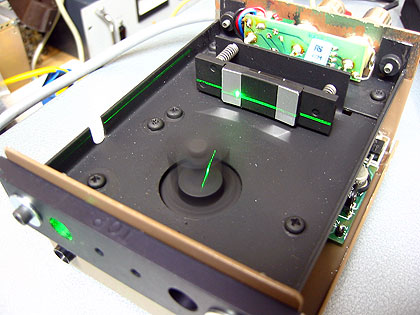
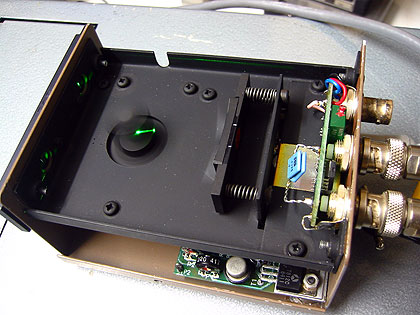
This is the control unit I luckily acquired off ebay for $15:
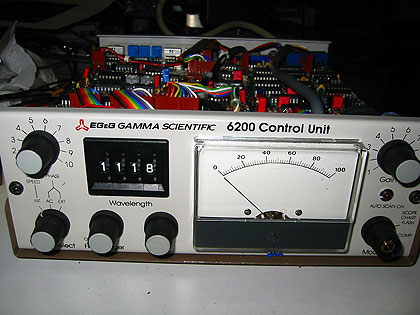

The pic below shows on the lower trace the photo-diode output, and on the upper trace the marker output of the controller box. The small peaks are 1nm apart, and the larger ones 10nm. the resolution is not sufficient to resolve several longitudinal modes of a laser diode. This would require a resolution of 0.3mn or better, while this OSA has 1-2 nm. But for determining the wavelength of a high power 808+/- nm diode it should work well enough, and that will be my primary use for it.
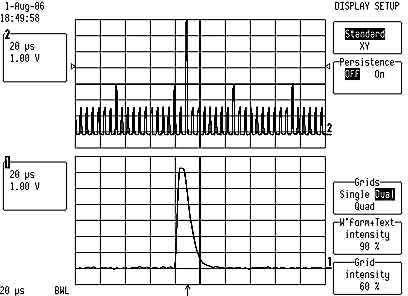
The single large peak is set by the digital thumbwheel on the front panel of the controller box; the analog meter displays the intensity sampled at that location (one can have it also automatically scan). There is a map between this location and the digital wheel setting on the control unit, which can be read off from tables given in the manual. It depends on the specific model RSO610x (and each labelled with an extra letter on top of that), and for each of these models incl letters there is a separate calibration table. For the model 6105 I got, the thumbwheel setting and the actual wavelength differ per calibration table by approx 1nm; indeed the above picture shows the 532nm DPSS line and we see an offset of approx 1nm.
Here an overview of the various models:

Return to home page
Vers. 0.8-03/09